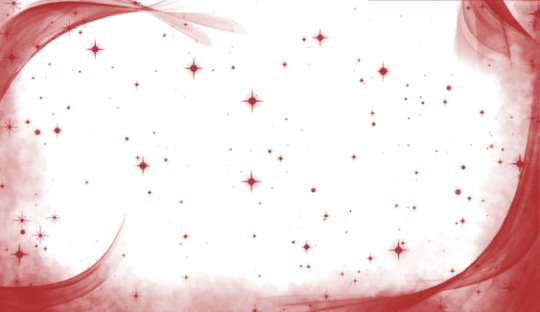Previously found at Kitsunememes. Not sure how active this will be but I will be taking requests as well in the ask box. Meme requests: Open Icon Requests: Open Musing Requests: Open Faceclaim Help: Open I also have a roleplay blog at the url amyriadofmuses which is a multi fandom multi muse blog
Don't wanna be here? Send us removal request.
Text
Apothecary Dairies Icons from vol. 3 Jinshi pt 1
100 by 100 icons of Jinshi as depicted in vol 3 of Apothecary diaries. Please like or reblog if using.






























24 notes
·
View notes
Text

CEMRE - MULTIMUSE PAGE !!!
This page is completely free. Please support me and my work by liking or reblogging this post.
[ INFORMATION ]
THIS CODE IS 100% JAVASCRIPT FREE!!!
The theme will adjust to (almost) all screen sizes, but is not really suitable for small mobile devices like cell phones.
All colors are easy editable. Not many colors are needed.
The code offers 1 main link (Home) but also 2 individual links.
Grayfilter & Colored overlay for Pictures available!
Background Pattern available.
Muse counter & Rules Textbox
[ GUIDELINES ]
Do not claim as your own.
Do not remove the credit!
Do not use as a base code or take parts of this code for your theme.
Feel free to edit as much as you want!
Further credits can be found in the code.
I will not be able help with customation of the theme. Editing help can be found in the theme itself as comments.
Click the SOURCE LINK to be redirected to the preview and the code!
178 notes
·
View notes
Text
𝐏𝐀𝐓𝐓𝐄𝐑𝐍 𝐁𝐀𝐍𝐍𝐄𝐑𝐒 | galaxy 03.


















( requested by → @kisakiskitten )
i went with a mix of forest greens and mint greens. it reminds me of colours from the aurora borealis hehe.
colours : 001 / 002 / 003 / 004 / 005
feel free to use; please like, reblog, and credit 〜
more dividers →
3K notes
·
View notes
Text
check the source link OR HERE for #230 gifs of 𝐭𝐚𝐲𝐥𝐨𝐫 𝐳𝐚𝐤𝐡𝐚𝐫 𝐩𝐞𝐫𝐞𝐳 as himself in various red white & royal blue press interviews. all gifs are 268 px by 165 px and made entirely from scratch by me for roleplaying purposes. please REBLOG this post if you found it useful and check my rules for more information.


133 notes
·
View notes
Text
ATLANTIS: THE LOST EMPIRE (2001) PROMPTS * assorted dialogue from the film, adjust as necessary
it's been my experience when you hit bottom, the only place left to go is up.
i sleep in the nude.
about time someone hit him. i'm sorry it wasn't me.
i didn't say it was the smart thing, but it is the right thing.
i came down the chimney. ho ho ho.
we've done a lot of things we're not proud of. robbing graves, plundering tombs, double parking... but nobody got hurt.
maybe somebody got hurt, but nobody we knew.
will you look at the size of this? it's gotta be half a mile high at least.
our lives are remembered by the gifts we leave our children.
you're so skinny, if you turned sideways and stuck out your tongue, you'd look like a zipper.
hey look, i made a bridge.
as far as me goes, i just like to blow things up.
come on. tell the kid the truth.
does it match my dress?
it was like a sign from god.
i got your four basic food groups: beans, bacon, whiskey, and lard.
you have disturbed the dirt.
what have you done?
if you give back every stolen artifact from a museum, you'd be left with an empty building.
i gotta admit, i'm disappointed.
you ask too many questions!
who are you? who sent you?
do not be such a crybaby.
now tell me your story, my little friend.
trust me on this one. you don't wanna know.
if you're looking for the pony rides, they're back there.
what else have you got in there?
forget your jammies, [name]?
you're gonna want a pair of these.
i think we've seen how effective my decisions have been.
have i left anything out?
you did set the camp on fire and drop us down that big hole.
i took this job when my dad retired.
you are a scholar, are you not?
who told you that?
let's go over it again, just so we got it straight.
we're all gonna die.
someone needs to talk to that girl.
for the good of the mission, i will go!
tonight's supper will be baked beans. musical program to follow.
hey, i had nothing to do with it.
i'll have to quit my job.
you didn't just drink that, did you?
don't move, don't breathe, don't do anything...
carrots? why it it always carrots?
with something like that, i would have white wine.
we can't let him do this!
okay, now you can go.
how was my accent?
we are not thriving.
where are you going?
don't take no for an answer.
look, i have some questions for you, and i'm not leaving this city until they're answered.
somebody's gonna have to suck out this poison.
i thought you said he only had guns!
mercenary? i prefer the term "adventure capitalist."
do you wanna do my job? be my guest.
i'm gonna need you to fill these up.
thank god i lost my sense of taste years ago.
why don't you translate, and i'll wave the gun around.
this was not part of the plan.
you do swim, do you not?
your heart has softened.
you would have slain them on sight.
what they have to teach us, we have already learned.
something wrong with your neck?
so i guess this is how it ends? fine. you win.
get back! i've got soap, and i'm not afraid to use it!
look at all those tattoos!
i've got a bone to pick with you.
any last words?
i really wish i had a better idea than this.
i know i'm forgetting something.
you're the one who got us here.
you must've read it a dozen times by now.
sometimes i get a little carried away.
all will be well. be not afraid.
i hate fishing. i hate fish. hate the taste, hate the smell, hate all them little bones.
you will not regret this!
hard to believe he's still single.
can you drive a truck?
no time like the present.
i love it when we win.
you pick now of all times to grow a conscience?
170 notes
·
View notes
Text

Rivals Sentences
(Sentences for muses who are rivals with each other. Adjust phrasing where needed)
"Have you deceived and betrayed anyone yet today? It is almost lunchtime, after all."
"We could circle each other and growl, sleep with one eye open, but that thought wearies me."
"It's not over, you know."
"There are times I think you don't take me seriously. I think that ought to change."
"Touchy, aren't you?"
"Do you really think you can win?"
"Are you forgetting you tried to kill me?"
"I came back to finish you off."
"You've gotten good and greasy with your words, haven't you?"
"If you can look past your anger, you may find that I am more of an ally than you may think."
"Apology not accepted."
"I know you need my help."
"When do you get so fragile?"
"You've been in the spotlight too long already. I want you out of the way completely."
"Don't take this the wrong way, but I don't think about you all too often."
"You know this doesn't make us friends, right?"
"Now I know how weak you are."
"Let's get this straight; I don't like you any more than you like me."
"You aren't better than the rest of us, no matter what you may think!"
"I don't think I'm better than everybody else. Just you."
"You're obviously not doing this out of the goodness of your heart, so what is it that you want?"
"You wouldn't want me to make it too easy for you, would you?"
"Our game ends here. I've made sure of that."
"Aren't you getting a little tired of this? Because I know I am."
"I've been waiting a long time for someone good enough to take me down."
"You're like a bad omen. Always around for my misery."
"Do me one last favour, for old time's sake?"
"I thought I already killed you!"
"Nothing interests me less than impressing you."
"I'm just going to come out and say it; I don't trust you. I sure as hell don't want you here."
"I know you're not very fond of me, but I never realised you were so obsessive!"
"I respect your talent, but I don't like anything else about you."
"I bet you were disappointed when I showed up alive"
"Is this where you warn me that this town isn't big enough for the both of us?"
109 notes
·
View notes
Text
𝐁𝐀𝐋𝐃𝐔𝐑'𝐒 𝐆𝐀𝐓𝐄 𝟑 𝐒𝐄𝐍𝐓𝐄𝐍𝐂𝐄 𝐒𝐓𝐀𝐑𝐓𝐄𝐑𝐒 SHADOWHEART EDITION ⟶ part two / part one

“some sacrifices just aren’t worth it.”
“we’re on our own… though i suppose we’re used to it by now.”
“seems you’re determined to put our mutual trust to the test. pity.”
“what? now you’re resorting to threats?”
“the more i find, the more curious i get.”
“quite the gossip, aren’t you? wouldn’t have thought you cared.”
“i’ll keep a spot for you. it’ll be just like old times.”
“that’s a bigger fight than we needed to pick. not the subtlestest of assassins, aren’t you?”
“you’re lucky i managed to catch up with you when i did. we’re both lucky, in fact.”
“first they take her friends, then they steal her face? some people just don’t understand boundaries.”
“you’re lucky i’m feeling kind.”
“you are adorable, though perhaps a little inattentive.”
“most of the things you say still sound like you’re in a two-copper paperback read by little girls.”
“i won’t pretend the thought hasn’t crossed my mind once or twice. or… more than that.”
“perhaps happiness lies elsewhere for both of us.”
“we’re in this together, but i’ll happily go it alone. my faith will keep me company.”
“i’m sorry, for - creeping up on you with a dagger. it won’t happen again.”
“i don’t think i’ve ever had a confident quite like you.”
“now that you have the truth, please don’t make a big fuss about it.”
“you couldn’t resist the allure of the shadows? i don’t blame you. it’s the only power that truly counts.”
“you did what was best for you. don’t let anyone tell you otherwise.”
“i’m sure someone will write a romantic ballad about this one day. hopefully not a tragic one.”
“perhaps i’m a better liar than you then.”
“that’s no ordinary darkness. it feels powerful… and familiar.”
“i have everything i need to make new memories.”
“considering all we’ve been through, i think i was very lucky to find such favorable company. and attractive company too, no less.”
“we did what we had to do. and by that i mean - never bring up the subject again.”
“i’ll never be able to fill the place by my side where you should be standing. and i’ll never forget you. not a single moment.”
“i’m afraid my gratitude is all i have to offer. and a kiss, of course.”
“i’m just waiting for you to get really desperate before naming my price.”
“that silver tongue of yours is dangerous - bravo.”
“honestly, what did you think was going to happen? you’d develop a taste for it?”
“i suppose that goes to demonstrate just how desperate we are.”
“worse things have been shoved in your face lately.”
“i trust you more than most, but i’m sorry, that’s too much to ask. that’s my responsibility.”
“most would consider us enemies, not friends.”
“i don’t need your tough love. i need to be left alone.”
“i like her. she looks like she could throw me over her shoulders and carry me to safety. should, uh, the need arises.”
“if i wanted a tail, i’d kill a cat.”
“oh, don’t pout. you walked right into that.”
“it’s good to know you’re not entirely without a sense of humor.”
“careful, in future - you can’t just stick your hand in every strange hole you come across.”
56 notes
·
View notes
Text
Writing Seizures
Latest installment in Disability Writing Guides! As always, feel free to add something, or come into my ask box with a question, comment, or request.
This post is intended as a writing resource, not medical advice or a comprehensive exploration of seizures or seizure disorders.
Vocab
A seizure is a brief change in normal brain activity. Sometimes this is visible and sometimes not. They can last variable lengths of time and occur with varying frequency depending on the cause. They can be caused by epilepsy, trauma, illness, drug use, or any number of other factors.
Epilepsy is a general term for brain disorder characterized by frequent seizures. A person can have seizures without having epilepsy. Epilepsy is not a distinct diagnosis; there are many different types.
Epilepsy is diagnosed after a patient either has two seizures, or one seizure and an EEG that shows the potential for future seizures.
Again: If a person seizes more than once, they are medically defined as epileptic. A person can be diagnosed as epileptic after only having one seizure if their EEG shows potential for more.
Rescue meds are medications given to stop a seizure currently in progress.
Antiseizure drugs or ASDs, also known as anticonvulsants or antiepileptics, are drugs taken daily to prevent seizures from occurring. These are different from rescue meds.
Status epilepticus is a seizure that lasts longer than five minutes or having a seizure and then seizing again within five minutes without regaining full consciousness. Status epilepticus is extremely dangerous and can cause brain injury or death. Someone experiencing status epilepticus needs immediate medical attention.
Generally speaking, serious intervention would begin before the seizure reached its fifth minute. If someone is seizing past four minutes with no sign of stopping, the people timing the seizure should not wait until five minutes to call 911, administer rescue meds, etc.
A seizure cluster is when a person experiences two or more seizures within a 24 hour period.
A nonepileptic event is an event that may look like a seizure but is produced by a different condition. Examples include ticcing due to Tourette’s or a heart arrhythmia causing a person to pass out suddenly.
Tonic refers to the muscles in the body becoming stiff.
Atonic means the muscles in the body relaxing.
Clonic refers to periods of shaking or jerking in parts of the body.
Myoclonic also refers to short jerking in parts of the body, but is generally more localized/occurring in a smaller area of the body.
Types of Seizures
I’m not going to go through every type of seizure, but I will go over some basics. This is massively simplified, and intended as a general writing resource, not technical or medical knowledge. Feel free to correct if I’m saying something wrong, or add detail.
Seizures are first divided into two overarching groups. Generalized seizures mean that excessive or unusual electric signals are being discharged across the entire brain. Focal or partial seizures mean that excessive or unusual electric signals are being discharged in one specific part of the brain.
Tonic-clonic seizures are the kind most commonly portrayed in media. They involve a total loss of consciousness and involuntary muscle contractions and shaking or jerking in parts of the body. This type of seizure may begin as a focal seizure or a myoclonic seizure (more on this later), but a tonic-clonic seizure is always generalized. Also - this type of seizure was formerly known as grand mal, but this is an outdated term and no longer used.
Myoclonic seizures are partial seizures, characterized by the sudden, involuntary twitching of a muscle or group of muscles. People retain consciousness during these seizures, but do not have control over their body or movements.
Atonic seizures, also called drop seizures or akinetic seizures, cause the sudden loss of muscle strength. They’re called drop seizures as they often (but not always!) cause a person to drop to the ground. A person experiencing an atonic seizure generally remains conscious.
Focal, partial, or absence seizures are seizures that do not involve the whole brain. They can involve repetitive movement like muscle jerking, but more often are characterized by being “frozen,” feeling “out of it,” or “staring into space.” It may be difficult for observers to tell that someone is seizing. This type of seizure was formerly known as petit mal, but this an outdated term and is no longer used.
Focal onset aware seizures, formerly known as “simple partial seizures,” occur when someone has a partial seizure and retains consciousness and awareness. Someone can look unaware and still be aware when experiencing this type of seizure. This type of seizure may involve feeling “frozen” or repeated small muscle movements.
Focal onset impaired awareness seizures, formerly known as “complex partial seizures,” occur when someone has a partial seizure and loses consciousness or awareness. This is type of seizure may involve feeling “out of it,” “staring into space,” or a loss of memory.
In describing a seizure (in modern-day America), the convention followed is seizure type, awareness level, and sometimes, where a seizure begins if it is a partial seizure. Thus, you get diagnoses like “Focal onset impaired awareness seizures arising from the temporal lobe,” “Focal onset atonic aware seizures arising in the frontal lobe,” or “General onset tonic-clonic seizures.”
These diagnoses are very wordy, and are sometimes shortened. Drop seizures or absence seizures are typically used as more casual terms. Also, as seizures generally begin in one of the four lobes of the brain, epilepsy is sometimes described by which lobe the seizures arise in (temporal lobe epilepsy, occipital lobe epilepsy, etc.)
Process of a Seizure
An aura is a feeling, sensation, or “warning” experienced by a person who is about to seize. Auras tend to present the same way over and over. Someone may not have auras, or recognize an aura as being a prelude to a seizure. Sometimes, an aura occurs and a seizure does not follow. Basically, there are no real rules with auras, but they are pretty common, and are generally not observable except to the person experiencing them.
Fun fact: people who have migraines also tend to have auras! It is believed that Lewis Carrol wrote Alice in Wonderland while experiencing a pre-migraine aura.
The ictal period refers to the experience of an actual seizure, when electrical activity in the brain is at its most intense. What a seizure itself looks or feels like depends on the type of seizures a person experiences, and y’all should conduct research into that for your characters.
Some people need rescue meds administered every time they seize. Others are only supposed to be given if they seize for a certain amount of time (longer than two minutes, for instance). Meds can be administered as nasal sprays, rectally, or tucked under the tongue or into the cheek. Rescue medications are only injected in hospital settings.
Remember that regardless of how often a character seizes or how long they’ve had epilepsy, seizing for more than five minutes, or multiple times within five minutes without regaining consciousness, is a medical emergency. Rescue meds should be administered and whatever medical intervention is appropriate for your setting should be immediately undertaken.
The post-ictal stage occurs after a seizure ends and lasts anywhere from five to thirty minutes. This is the period when a person is still experiencing after affects from their seizure, like confusion, drowsiness, hypertension, headaches, or nausea. Not everyone experiences post-ictal symptoms, and a person may continue to feel exhausted, irritated, or “out of it” more than thirty minutes after they seize.
Seizure Etiquette
Seizures can be surprising and very noticeable. A person that is seizing still deserves privacy. In your story, they should be given privacy, and good friends/teammates/co-characters could steer other people away or block them from being a public spectacle while they seize.
Do not have anyone put anything in a seizing character’s mouth. Ever. This is not necessary and can be dangerous, as a person can choke, or the person attempting to put something in their mouth could get accidentally bitten.
Do not restrain a person that is seizing. The character seizing or the character attempting to restrain them could get hurt, and the restraints are not going to be helpful whatsoever. Characters can move chairs or place cushions to keep a seizing character from hitting them; do not attempt to stop the seizing character’s body from moving how it will.
If necessary, the person seizing can be placed on their side, otherwise, do not attempt to move them.
If a non-epileptic character seizes, it is an emergency. Epilepsy can arise spontaneously at any age, but seizing with no prior history of seizures is a big deal, and the causes for a seizure need to be checked out to understand what caused it.
If your characters have access to medical knowledge and medical treatment, it would be realistic to have them time the seizure so that they know if a character needs rescue meds or has entered status epilepticus.
Rescue meds can be very, very expensive. A character will likely not receive rescue medication every time they seize, especially if their condition is largely stable.
It can be scary and emotional to watch someone seize. Feelings of fear and helplessness are common, especially if what’s needed is for characters to stand and wait to see if the seizing individual needs further help. It’s okay for your characters to feel that and react to that.
Things to Know
Epilepsy mostly presents in childhood and in people older than 60, but can arise at any age. Repeated seizures caused by an underlying condition (brain injury, tumors, strokes) are still considered epileptic seizures, and the person that has them, epileptic.
Repeating it once more: If your character seizes more than once, they are medically defined as epileptic.
The vast majority of seizures do not cause brain damage, or any other kind of damage. They can be frightening, distracting, inconvenient, upsetting, confusing - any number of things. But the vast majority do not cause physical harm, besides the bruises or scrapes that may come from muscle contraction or losing awareness.
Some seizures do cause brain damage. If you’re writing this scenario, please do some research into the type of seizure that would cause brain damage and what kind of brain damage that would be. Do not, for instance, have your character experience a tonic-clonic seizure and then come back in a wheelchair with no further explanation.
Sometimes, the muscle contractions of a seizure can cause spit or foam to collect around someone’s mouth. Sometimes, people bite their tongue, and this foam or spit can appear bloody. No internal injuries occur as a result of a seizure. Any bloody foam or spit is a result of a bitten tongue or cheek, and nothing more.
People who are seizing sometimes lose bowel or bladder control. This is not something they have any control over, but can still be embarrassing and is sometimes a reality of living with seizures.
In the United States, driving laws vary from state to state, but generally a person needs to be seizure free for a period of months (usually 3-6) before they are allowed to drive. The restrictions on driving commercially are much stricter.
Someone diagnosed in childhood may grow out of their epilepsy. Some estimates put the number of kids that will outgrow their epilepsy above 50%. If someone is seizure free for 2-5 years, they may begin to lessen their ASD dose, and may continue until they are no longer medicated at all.
Someone diagnosed in old age will not typically have a spontaneous remission of seizures.
Epilepsy can have a genetic basis or it can arise spontaneously. The fact that it can be passed from parent to child has been the basis of discrimination for a very long time. Be aware of this.
For much of human history, having epilepsy has been hugely stigmatized, and people with epilepsy have been routinely persecuted, particularly in the Western world under the banner of eugenics. As recently as the 1970s, many states were still forcibly sterilizing epileptic people. In writing a character with epilepsy, be aware that the diagnosis carries a heavy weight of stigma and painful history.
Though epilepsy and people who have epilepsy have long been stigmatized and persecuted, it has also long been regarded as a mystical illness, closely tied to spirituality and religion. In many places, people who have seizures are considered to be in religious ecstasy, having visions, or are chosen by higher powers. Consider the setting in which your story takes place and if this kind of thinking would realistically occur. Keep in mind that this view of epilepsy and seizures is not necessarily a positive thing.
Accessibility and Treatment
If you are writing a character who only seizes once (and the setting allows for it), proper treatment would consist of visiting whatever medical establishment exists in your universe, and monitoring or testing to determine the cause of a seizure and if another is likely to occur.
Even though your character is not going to seize again and does not have epilepsy, consider how the single seizure may affect your character. What did it mean to them to (perhaps publicly) lose control of their body or brain?
If your character does have epilepsy, their life will change or has always looked different because of that epilepsy. For example, someone with epilepsy may not be allowed to drive, or may have never learned to drive. It is not safe for someone who has uncontrolled epilepsy to live alone. How would these considerations affect your character’s life and independence?
Think about how having seizures would apply to your character and your setting. Do they feel safe swimming? Spending significant time alone? Are there places that they avoid because it’s too dangerous to seize there?
In real life, people who experience tonic-clonic or atonic seizures often take precautions to ensure their safety should they have a seizure. People who have atonic seizures wear padded helmets to protect their heads. People who experience an aura may get themselves to a safe location, or adjust their surroundings so that they won’t hurt themselves while they seize. What precautions might your characters take to protect themselves?
Seizure triggers. Photosensitivity is a very common one, with flashing lights being especially dangerous for epileptic people. Some seizures have clear, specific triggers, while others seem to arise out of nowhere. Though it may be difficult to tell what exactly triggered a seizure, the modern Western medical establishment believes that all seizures have triggers, though the triggers may not be known. Triggers tend to be environmental cues that the central nervous system over-responds to, like the aforementioned flashing lights. A friend of mine has epilepsy that is triggered by anything coming directly at their face, like balls being thrown towards them. Once, a seizure was triggered by a butterfly flying directly at them.
Seizures can also be triggered by sounds, smells, or sensation, not just sight!
What might your character’s seizure triggers be? Your character may or may not know themselves, but if the triggers are known, how does your character avoid them, or plan their life around them? My friend’s seizure trigger meant that they couldn’t play ball sports, even casually, which kind of sucked. But having a seizure sucked more, so.
In terms of accessible spaces: The more open space, the better, and the softer the surfaces, the better. For instance, people who have seizures may prefer using an accessible bathroom stall, as they are larger, and the person seizing is less likely to become trapped or hurt themselves if they seize unexpectedly in the bathroom. What kinds of spaces does your character seek out, particularly if they are aware they might seize soon?
A properly medicated epileptic character may still have seizures. Medications are intended to control, shorten, and decrease total number of seizures. Sometimes they entirely eliminate seizures, but a person may still seize and that does not mean the medication isn’t working. A character who still seizes frequently and for long stretches of time likely is not properly medicated. Medications should be taken around the same time(s) every day for maximum efficacy.
Life changes, particularly puberty, can make medication less effective.
Proper medication is life-changing for people with epilepsy, and would likely be life-changing for your epileptic character as well. What does the process of getting medicated look like? How does your character feel upon being properly medicated? What in their life changes, and what stays the same?
Are there any drawbacks to being medicated? Side effects? Cost of medication?
If epilepsy is drug resistant, there are a few other options. I’m only going to discuss two, one because it has a long, fraught, and misunderstood history, and the other because it’s Trendy.
Brain surgery is an option for people/character with epilepsy. This is not the scary ice pick lobotomy of the 20th century. Brain surgery is a necessary tool to help epileptic people that are struggling with frequent, severe seizures that do not respond to medication, or when the side effects of medication are intolerable. Surgery can mean removing part of the brain (resecting), killing specific nerve cells where seizures start (lesioning), disconnecting the hemispheres of the brain (corpus callosotomy), or the implantation of a pacemaker-type device that uses electrical signals to block or disrupt seizures.
If your character is getting brain surgery for epilepsy in a contemporary, futuristic, or fantasy setting, please do your own research and ensure that the type of surgery they’re receiving fits their type of epilepsy and their need. Please frame the surgery accurately and avoid falling back on scary tropes about people coming back with different personalities, no personality, or dying in these procedures.
The last treatment option I’m going to discuss here is the ketogenic or keto diet. You may not be aware, but the diet was originally developed to treat children with epilepsy, and there is limited evidence showing that it does decrease or eliminate seizures in children. This diet is extremely high in fat and as low as possible in carbs. The majority of people who believe they are following a keto diet and are in ketosis (body and brain fueled by fat instead of sugar) are wrong. It is extremely difficult to follow a strict keto diet and is absolutely a major life change.
The diet would typically only be recommended for children between 2 and 12 whose epilepsy is resistant to medication.
Why or how the keto diet works to control epilepsy is not well understood. The fact that the brain is fueled by fat products known as ketones, rather than glucose, is thought to be related. If anyone knows more, feel free to contribute that knowledge.
Rethink
If your character gets brain surgery for their epilepsy, and that surgery is framed as negative, think about why that is. I absolutely understand the long, problematic, real-life history behind lobotomies, and I am not telling you not to explore that. Please do think hard about what beliefs you may have, and what messages you may be sending, about people who get brain surgery.
Characters with epilepsy that gives them visions or confers some kind of power. Yes, there are historical associations between epilepsy and religiosity, but remember the real world people who have epilepsy and how this framing may strike them. This is a common trope, so do a little introspection on what about this narrative is compelling to you and what messages you’re consuming and endorsing.
Seizures that occur to add intensity, drama, fear, or risk to the story. What are your characters afraid of? Why are they afraid of it? As always - what messages are you sending about seizures or the people who experience them? How would it feel to read your portrayal as a person who regularly seizes?
A character who seizes but does not have epilepsy. Related to the above - why is a seizure important to your story, but epilepsy is not a part of it?
A character who seizes twice but is not described as/does not identify with epilepsy. For one, this is medically inaccurate, which you should just be aware of. Secondly - what about this diagnosis is undesirable or unnecessary for your story? Why?
Write what you’re going to write, but understand why you’re writing it, and how it might be perceived. In particular, when writing about a complex, widely misunderstood, and stigmatized condition like epilepsy, understand what stigma you may be contributing to, what inaccuracies you may be presenting, and what complexities you may be ignoring, especially by having a character seize without being epileptic.
Resources
A lot of this is written based on my relationships with epileptic people and personal research. I don’t like to recommend media that I haven’t personally read/watched, just because then I don’t know what I’m recommending, but if anyone else has recommendations, please feel free to add them!
How Evan Broke His Head and Other Secrets by Garth Stein is contemporary novel about a Seattle man with epilepsy who is suddenly thrust into parenting a 14-year-old son he didn’t know existed. I read it a while ago and remember it being pretty good, but nothing special (no offense, Garth Stein). Worth noting that while the author is not himself epileptic, his sister does have epilepsy and he likely has better than typical knowledge of the condition.
The Spirit Catches You and You Fall Down by Anne Fadiman is a creative nonfiction book about a Hmong family, their epileptic child, and the medical saga they embark on as the American medical establishment attempts to treat their child. It is written about a real-life immigrant family and their daughter and was extensively researched over eight years, focusing on cultural differences, and xenophobia, racism, and misunderstanding in medicine.
This Podcast Will Kill You, which is free on Spotify, includes an hour and forty minute long episode diving into (some) of the etiology and history of epilepsy.
Maintenance Phase is a podcast that is also free on Spotify and has an episode about the keto diet. The main focus of the episode is the keto diet as it is used for weight loss, but it does include some fascinating backstory on the (invented) narrative that the keto diet is a secret that is being kept from the general public.
Please hit me up with questions, comments, corrections, or requests. Happy writing!
506 notes
·
View notes
Text

CALIRPH 037: TEAM BLACK. a coloring psd.
this psd is semi heavy and focuses on bringing out reds and turns all of the image into greyscale or soft toned down blues near black. (specially leves + selective color + color balance.) must use the adjustment folder.
remember to reblog if you save/use. credit has to be visible on your carrd/doc if you use. (reblog, if you can, like if you must.)
consider donating through paypal or buy me a coffee through ko-fi.
this psd is 5 DOLLARS VIA PAYHIP.
14 notes
·
View notes
Text
Apothecary Dairies Icons from vol. 3 MaoMao pt 10
100 by 100 icons of Maomao as depicted in vol 3 of Apothecary diaries. Please like or reblog if using.







9 notes
·
View notes
Photo

𝐈𝐂𝐎𝐍𝐒: 𝐆𝐎𝐋𝐃 𝐏𝐍𝐆
Under the cut are gold themed icons. All these were find on different plateforms and were cut out by me. Credits would be appreciated if used.
Like what you see? You can always buy me a coffee!
Keep reading
701 notes
·
View notes
Text
Writing Notes: Thinking
The way we represent the world influences the degree of success we experience in our lives.
Example 1: If we represent yellow traffic lights as the time to hit the accelerator, then the world might give us tickets, scares, or accidents.
Example 2: If we represent our diet as a way to maximize refined sugar intake, then we might wind up experiencing heart disease.
Mental representations and intelligence go hand in hand.
Some mental representations are more intelligent, because they are more adaptive and support outcomes such as well-being, safety, and success.
Concepts
The information we sense and perceive is continuously organized and reorganized into concepts that belong to categories.
Most concepts cannot be strictly defined but are organized around the best examples or prototypes, which have the properties most common in the category or might be considered the ideal example of a category.
Concepts - are at the core of intelligent behavior.
We expect people to be able to know what to do in new situations and when confronting new objects.
Example: If you go into a new classroom and see chairs, a blackboard, a projector, and a screen, you know what these things are and how they will be used. You’ll sit on one of the chairs and expect the instructor to write on the blackboard or project something onto the screen. You’ll do this even if you have never seen any of these particular objects before, because you have concepts of classrooms, chairs, projectors, and so forth that tell you what they are and what you’re supposed to do with them.
Categories
Objects fall into many different categories, but there is usually a hierarchy to help us organize our mental representations.
A concept at the superordinate level of categories is at the top of a taxonomy and it has a high degree of generality (e.g., animal, fruit).
A concept at the basic level categories is found at the generic level which contains the most salient differences (e.g., dog, apple).
A concept at the subordinate level of categories is specific and has little generality (e.g., Labrador retriever, Gala).

We use category hierarchies to help us organize and group different concepts.
Brown (1958) noted that children use basic level categories when first learning language and superordinates are especially difficult for children to fully acquire.
People are faster at identifying objects as members of basic-level categories (Rosch et al., 1976).
Recent research suggests that there are different ways to learn and represent concepts and that they are accomplished by different neural systems.
Using our earlier example of a classroom, if someone tells you a new fact about the projector, like it uses a halogen bulb, you are likely to extend this fact to other projectors you encounter.
In short, concepts allow you to extend what you have learned about a limited number of objects to a potentially infinite set of events and possibilities.
Categorization & Culture
There are some universal categories like emotions, facial expressions, shape and color but culture can shape how we organize information.
Chiu (1972) was the first to examine cultural differences in categorization using Chinese and American children:
Participants were presented with 3 pictures (e.g., a tire, a car, and a bus), and were asked to group the 2 pictures they thought best belonged together.
Participants were also asked to explain their choices (e.g., “Because they are both large”).
Results showed that the Chinese children have a greater tendency to categorize by identifying relationships among the pictures but American children were more likely to categorize by identifying similarities among pictures.
Later research reported no cultural differences in categorization between Western and East Asian participants.
However, among similarity categorizations the East Asian participants were more likely to make decisions on holistic aspects of the images and Western participants were more like to make decisions based on individual components of the images (Norenzayan, Smith, Jun Kim, and Nisbett, 2002).
Cultural differences in categorizing were also found by Unworth, Sears and Pexman (2005) across 3 experiments; however, when the experiment task was timed there were differences in category selection.
These results suggest that the nature (timed or untimed) of the categorization task determines the extent to which cultural differences are observed.
The results of these categorization studies seem to support the differences in thinking between individualist and collectivist cultures.
Western cultures are more individualist and engage in more analytic thinking and East Asian cultures engage in more holistic thinking (Choi, Nisbett, & Smith, 1997; Masuda & Nisbett, 2001; Nisbett et al., 2001; Peng & Nisbett, 1999).
Holistic & Analytical Thinking
Holistic thought - characterized by a focus on context and environmental factors so categorizing by relationships can be explained with referencing how objects relate to their environment.
Analytic thought - characterized by the separation of an object from its context so categorizing by similarity means that objects can be separated into different groups.
A major limitation with these studies is the emphasis on East Asian, specifically the use of Chinese participants and Western cultures.
There have been no within culture replications using participants from other non-Asian collectivist cultures.
Source ⚜ Writing Notes & References
115 notes
·
View notes
Text
— fall florals










———
[Free] Masterlist Headers & Dividers!
Please like or reblog if you use 💕
2K notes
·
View notes
Text



〔 ANA HIKARI 〕 580 GIFS from AS FIVE (season 1, 2020). the pack is free or pay what you want (if you want to support me!). feel free to use and edit these as you please, i just ask that you don’t redistribute them in gif hunts or as gif icons.
tws — flashing lights (party lights, camera flash); drinking; eating; drug use; kissing; partial nudity (underwear, towel).
born in brazil, she is of japanese, unspecified brazilian indigenous, jewish, unspecified african, and unspecified european descent. she’s bisexual.
107 notes
·
View notes
Text
Writing Intimacy
i often see writers sharing a sentiment of struggling with writing kiss scenes which honestly bleeds into other portrayals of physical intimacy. i see it a lot in modernized styles of writing popularized by the recent trend in publishing to encourage short, choppy sentences and few adverbs, even less descriptive language. this makes intimacy come across awkward, like someone writing a script or clumsy recounting of events rather than a beautiful paragraph of human connection.
or just plane horniness. but hey, horny doesn't have to be mutually exclusive with poetic or sensual.
shallow example: they kissed desperately, tongues swirling and she moaned. it made her feel warm inside.
in depth example: she reached for the other woman slowly and with a small measure of uncertainty. the moment her fingers brushed the sharp, soft jaw of her companion, eliza's hesitance slid away. the first kiss was gentle when she finally closed the distance between them. she pressed her lips lightly to gabriella's in silent exploration. a tender question. gabriella answered by meeting her kiss with a firmer one of her own. eliza felt the woman's fingers curling into her umber hair, fingernails scraping along her scalp. everything inside eliza relaxed and the nervousness uncoiled from her gut. a warm buzz of energy sunk through her flesh down to the very core of her soul. this was right. this was always where she needed to be.
the first complaint i see regards discomfort in writing a kiss, feeling like one is intruding on the characters. the only way to get around this is to practice. anything that makes you uncomfortable in writing is something you should explore. writing is at its best when we are pushing the envelope of our own comfort zones. if it feels cringy, if it feels too intimate, too weird, too intrusive, good. do it anyway! try different styles, practice it, think about which parts of it make you balk the most and then explore that, dissect it and dive into getting comfortable with the portrayal of human connection.
of course the biggest part comes to not knowing what to say other than "they kissed" or, of course, the tried and true "their lips crashed and their tongues battled for dominance" 😐. so this is my best advice: think beyond the mouth. okay, we know their mouths are mashing. but what are their hands doing? are they touching one another's hair? are they scratching or gripping desperately at one another? are they gliding their hands along each other's body or are they wrapping their arms tightly to hold each other close? do they sigh? do they groan? do they relax? do they tense? are they comfortable with each other or giddy and uncertain? is it a relief, or is it bringing more questions? is it building tension or finally breaking it?
get descriptive with the emotions. how is it making the main character/pov holder feel? how are they carrying those emotions in their body? how do they feel the desire in their body? desire is not just felt below the belt. it's in the gut, it's in the chest, it's in the flushing of cheeks, the chills beneath the skin, the goosebumps over the surface of the flesh. everyone has different pleasure zones. a kiss might not always lead desire for overtly sexual touches. a kiss might lead to the desire for an embrace. a kiss might lead to the impulse to bite or lick at other areas. a kiss could awaken desire to be caressed or caress the neck, the shoulder, the back, the arms etc. describe that desire, show those impulses of pleasure and affection.
of course there is the tactile. what does the love interest taste like? what do they smell like? how do they kiss? rough and greedy? slow and sensual? explorative and hesitant? expertly or clumsily? how does it feel to be kissed by them? how does it feel to kiss them?
i.e. examine who these individuals are, what their motives and feelings are within that moment, who they are together, what it looks like when these two individuals come together. a kiss is not about the mouth. it's about opening the door to vulnerability and desire in one's entire body and soul.
13K notes
·
View notes
Text










IMAGE OVERLAYS。
found in a server! read pinned.

3K notes
·
View notes
Text
"How. . .?" Starters
"How does this go together?"
"How are you still alive right now?"
"How did you get to be so cute?"
"How am I supposed to know if you don't tell me?"
"How are we going to get there?"
"How much did you pay for that?"
"How do you take your coffee?"
"How could you do this to me?"
"How many times did you get stung?"
"How often are you feeding it?"
"How did they die?"
"How about sushi for dinner?"
"How do I turn it off?"
"How did you figure that out so fast?"
"How do you like your eggs?"
"How are we supposed to climb this?"
"How did you get here?"
"How do we get inside?"
"How much weight can this thing handle?"
"How long will it take to cook?"
"How low can you go?"
"How far is it from here?"
"How many push up can you do?"
"How does an internal combustion engine work?"
"How did you get your hair like that?"
"How am I supposed to live without you?"
"How much candy did you get?"
"How many marshmallows can you fit in your mouth?"
"How can you trust them after everything they put you through?"
"How long will you be gone?"
213 notes
·
View notes